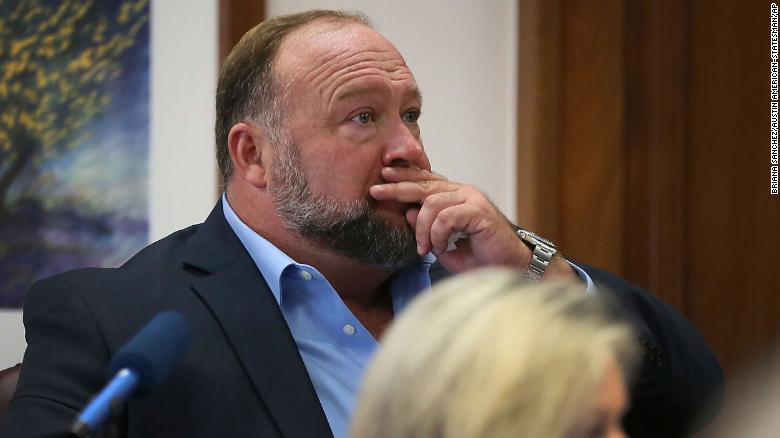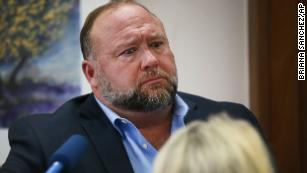
Joe Manchin and Chuck Schumer at in the Eisenhower Executive Office Building in March.
PHOTO BY CHIP SOMODEVILLA
LONG READ
(Bloomberg) — It was the middle of July — with temperatures surging through one of the hottest summers in US history, half of the country in drought — and the Senate’s all-important member, Joe Manchin of West Virginia, had slammed the brakes on legislation to combat global warming. Again.
That’s when billionaire philanthropist and clean-energy investor Bill Gates got on the phone with Senate Majority Leader Chuck Schumer, whose job it was to hold together the Democrats’ no-vote-to-spare majority.
One of the world’s richest men felt he had to give one of the nation’s most powerful lawmakers a little pep talk. “[Schumer] said to me on one call that he’d shown infinite patience,” Gates recounted in an interview last week, describing for the first time his personal effort to keep climate legislation alive.
“You’re right,” Gates told Schumer. “And all you need to do is show infinite plus one patience.”
Gates was banking on more than just his trademark optimism about addressing climate change and other seemingly intractable problems that have been his focus since stepping down as Microsoft’s chief executive two decades ago. As he revealed to Bloomberg Green, he has quietly lobbied Manchin and other senators, starting before President Joe Biden had won the White House, in anticipation of a rare moment in which heavy federal spending might be secured for the clean-energy transition.
Those discussions gave him reason to believe the senator from West Virginia would come through for the climate — and he was willing to continue pressing the case himself until the very end. “The last month people felt like, OK, we tried, we’re done, it failed,” Gates said. “I believed it was a unique opportunity.” So he tapped into a relationship with Manchin that he’d cultivated for at least three years. “We were able to talk even at a time when he felt people weren’t listening.”
Few had any idea at this time that talks remained open at all. In addition to Gates, an ad hoc group of quiet Manchin influencers sprang into action just when climate legislation seemed out of reach. Schumer’s office credited the bill’s passage to persistence and otherwise declined to comment.
Collin O’Mara, chief executive officer of the National Wildlife Federation, recruited economists to assuage Manchin’s concerns — including representatives from the University of Chicago and the Wharton School of the University of Pennsylvania. Senator Chris Coons of Delaware brought in a heavyweight: former Treasury Secretary Lawrence Summers, who has spent decades advising Democrats.
The economists were able to “send this signal that [the bill’s] going to help with the deficit,” O’Mara said. “It’s going to be slightly deflationary and it’s going to spur growth and investment in all these areas.” Through this subtle alchemy, clean-energy investments could be reframed for Manchin as a hedge against future spikes in oil and gas prices and a way to potentially export more energy to Europe.
That additional patience and pushing helped send a history-making climate bill through Congress. The Inflation Reduction Act, sponsored by Manchin and Schumer, includes $374 billion in new spending to speed up clean-energy deployment, incentivize consumer purchases of electric cars, and boost other green priorities (alongside expanded federal mandates for oil and gas development).
Now Biden has signed it into law. “I am confident this bill will endure as one of the greatest legislative feats in decades,” said Schumer at the signing on Tuesday. Doing so secures a landmark victory for Democrats, who acted in unison without a single Republican vote, and delivers on the climate agenda that formed a part of the president’s campaign promises.
It’s by far the biggest financial commitment the US government has ever made to fight climate change. The emissions reductions that will result from this law will be roughly the same as eliminating the annual planet-warming pollution of France and Germany combined, or about 2.5% of the total global greenhouse gas output, according to researchers who specialize in climate modeling. It might be just about enough to revive the virtually left-for-dead goal of limiting warming to 1.5° Celsius, as enshrined in the Paris Agreement.
But this turning point almost didn’t happen. Perhaps more than any previous moment in the effort to reverse rising temperatures, this one hinged on a handful of personalities and interpersonal relationships. This is the story of how quiet back-channeling helped shape the climate policies in the new law.
The Bill Behind the Bill
Gates started wooing Manchin and other senators who might prove pivotal for clean-energy policy in 2019 over a meal in Washington DC. “My dialogue with Joe has been going on for quite a while,” Gates said. “Almost everyone on the energy committee” — of which Manchin was then the senior-most Democrat — “came over and spent a few hours with me over dinner.”
With President Donald Trump in the White House, there was little prospect the dinner would turn into sweeping policy. Still, the evening was organized around a very Bill Gates theme: “The role of innovation in climate,” he recalled of the discussion. “How the US was really the only country, given how quickly this needs to get done, that has that innovation power in our universities, our national labs, our risk-taking ability.”
Gates asserted to the senators that the world needed American innovation unleashed if there was any hope of halting climate change, and it needed to start with leadership in Washington DC. “We’ve seen in industry after industry how that matters.”
But innovations that start in university labs often need even more government support to reach mass adoption, according to the way Gates sees things. Take a startup making carbon-free cement — success means bringing to market a product that’s as much as three times as expensive as normal cement.
This is no hypothetical for Gates. His investments through Breakthrough Energy, the Gates organization that does climate work, has sunk at least tens of millions into green cement startups such as Ecocem, Chement and Brimstone. None have yet reached commercial scale. He saw the bankruptcy filing of a battery startup he backed, Aquion, that might have had a fighting chance if energy-storage tax credits were available.
While a carbon tax could level the playing field, the US failed spectacularly when it tried to enact that policy under President Barack Obama. Manchin at the time released a campaign ad in which he shot a bullet into a copy of the cap-and-trade bill favored by many lawmakers in his party.
Tax credits are the other way governments can help overcome what Gates calls the “green premium,” easing the path to commercial adoption. New climate-friendly technologies such as hydrogen, advanced nuclear reactors, carbon capture and sustainable aviation fuel need this kind of support right now. The sum that can be brought to bear by the US government would be “far greater than any individual’s fortune,” said Gates.
This fits with the billionaire’s two general approaches to solving problems: sponsor the necessary innovations himself, and find more money from elsewhere that will multiply the effect of whatever funding he puts up. For example, the Bill and Melinda Gates Foundation seeded the Global Fund to Fight AIDS, Tuberculosis and Malaria with a little over $3 billion — a fraction of the $55 billion spent by the fund from government grants and other philanthropies.
On climate, the Gates playbook has been much the same. He made the case in 2015 that governments spent too little on research and development for energy technologies. In the shadow of that year’s Paris Agreement, Gates won a smaller pact among the US and 20 other countries to double funding for clean-energy research within five years.
Gates knew he would need to ensure green innovations reach scale, so in 2015 he also moved to launch Breakthrough Energy. Alongside the venture arm, the operation also includes a science arm that produces reports as well as a lobbying arm that pushes for government policies. Gates has committed to give away “virtually all” of his $123 billion wealth to his foundation, and any money he makes on startup investments will also be ploughed back into his climate work.
Breakthrough was up and running when Biden took the White House. Within months, the president had unveiled two big bills: the Infrastructure Investment and Jobs Act, and the Build Back Better Act. The infrastructure bill, with at least $80 billion in energy-transition spending, passed with relative ease in the Senate; 19 Republican senators voted in favor. It later passed the House after months of progressives holding it hostage to pressure Manchin on social spending.
But most of the climate spending — initially as much as $555 billion — was in a draft of BBB that attracted zero Republican support. That made Manchin’s vote absolutely necessary.
What happened next has become rather infamous for anyone who has followed the legislative politics of Washington over the past 18 months. As the crucial 50th vote for the Senate’s bare Democratic majority, Manchin held unmatched sway over negotiations that dragged on and on as progressives tried to force his to accept a $2.2 trillion version of the agenda. And then everything crashed to a halt.
On December 19, Manchin appeared on Fox News to announce that he wasn’t willing to support BBB because of his concerns over national debt, inflation, the Omicron variant of the Covid-19 pandemic, and geopolitical uncertainty with China and Russia. It emerged that he had months earlier signed a secret document with Schumer setting out his conditions: smaller spending, anti-inflation actions from the Fed, no “handouts” to low-income individuals.
In January, a few weeks later, Gates said he had lunch with the senator and his wife, Gayle Conelly Manchin, in a Washington DC restaurant. The trio talked about the needs of West Virginia, the center of the US coal industry. Gates suggested that, if coal power plants and mining jobs are eliminated, perhaps those workers can build new small nuclear power plants, including ones from a company he founded called TerraPower. (Representatives for Manchin did not respond to requests for comment.)
“I kept trying because I just didn’t see another chance,” Gates said. “That tax credit piece wasn’t going to show up. Except in this one path.”
In the background, somewhat obscured by the loud protests of activists who kayaked up to Manchin’s house boat in D.C. or visited him in West Virginia, envoys from Biden and manufacturing interests pursued a different tactic: presenting carefully picked demonstrations of how clean-energy spending could be a boon for his coal-and-gas state. In March, for instance, two cabinet officials descended on the West Virginia Regional Technology Park in South Charleston to herald plans by startup Sparkz Inc. to build batteries there. Steel of West Virginia Inc. and FerroGlobe PLC made news about solar manufacturing in the state.
But fast-spreading worries about inflation had Manchin’s attention, and on Feb. 1 he declared that Build Back Better was “dead.” Any attempts to pass a climate bill would have to start from scratch. Most observers focused on the end of what had been an enormous chunk of Biden’s agenda.
A sense of bitterness set into public discussions of the climate bill, another example of political gridlock. “I wouldn’t have wanted to be in his position,” Gates said. “The last six months have been challenging, even just getting in his car and trying to live a normal life.” But the billionaire didn’t believe it was over quite yet.
Five months later, Schumer and Manchin had in fact found a way to make progress on an all-new bill. On July 7, Manchin was spotted at the Sun Valley media conference that draws power brokers to Idaho each year. Gates also attended and met with the senator again. “We had a talk about what was missing, what needed to be done,” Gates recalled. “And then after that it was a lot of phone calls.”
Although Democrats still had a few months under congressional budget rules to ram legislation through the Senate with only 50 votes, lawmakers were preparing to leave for a month-long recess. And Democratic leaders were relying on the same bill — with or without clean energy tax credits — to extend Obamacare health insurance subsidies before they lapsed. If the legislation didn’t get done before the August break, the opportunity could close for good, especially if Republicans take control of the House or Senate in the November midterm elections.
That pressure drove Schumer to insist on moving quickly, Manchin pushed back, and once again talks collapsed on July 14. Machin told a local radio host in West Virginia that he was wary of adding to inflation that was running at record highs, including a 9.1% spike in the price of gas, groceries and goods in June. So he ruled out passing tax and climate provisions before the August recess.
There was widespread dismay — even tears — among climate activists and hardened energy lobbyists alike. It had seemed that a shrunken-down version of the bill was close at hand, and then the climate provisions were dead once more. One lobbyist who’d been working on renewable tax credits called it a “gut punch.”
Without the Senate, Biden vowed to take executive action. White House officials drew up plans for him to declare a climate emergency that would unlock presidential powers to spur clean energy without help from Congress. Senator Martin Heinrich, a Democrat from New Mexico, questioned why Manchin still had his gavel as chair of the influential energy committee.
“Joe Manchin was allowed to feel the whole breadth of the blowback that had really been held back up until that point,” said Christy Goldfuss, senior vice president of energy and environment policy with the Center for American Progress and a former adviser to Obama. “Everyone really unleashed the rage.”
It was a moment of reckoning. “Everybody had to kind of look into that abyss together to get their head around the fact that something is better than nothing,” said Heather Zichal, another former Obama climate adviser who now leads the American Clean Power Association.
Several loose coalitions of environmental groups, labor unions and clean-energy interests huddled on strategy and enlisted West Virginia interests to once again highlight the economic potential for Manchin. Some labor and environmental leaders pushed Schumer away from complacency by arguing that unilateral action by Biden was no substitute for hundreds of billions in clean-energy tax credits.
Fredd Krupp of the Environmental Defense Fund cautioned the White House against acting alone. “I had concerns that declaring that would push Manchin away,” he said.
Lobbying Blitz Gave Climate Bill New Life
Of course, it wasn’t just Bill Gates who had put in long months courting Manchin. The BlueGreen Alliance coalition of environmental and labor groups had spent 18 months building a reservoir of trust they could tap now. “We came to a judgment that Manchin legitimately wanted to get something done but he had serious concerns, and those concerns needed to be addressed,” said Jason Walsh, executive director of the alliance. “We believed he was still negotiating in good faith.”
Gates took the same view. “You know, people say Joe likes coal or something like that,” he said, referring to the millions of dollars the senator earned from a company supplying coal. “That’s really not fair. Joe wanted a climate bill.”
Several senators also refused to give up. Senator Ron Wyden, a Democrat from Oregon who heads the tax-writing finance committee, went into salvage mode to reclaim bits of defunct drafts that could be reused. “Every time I would talk to people I would say: ‘We’re going to stay at it until this happens. It’s too important. You don’t get this kind of opportunity all the time.’”
A small club of senators — Wyden called them the “never-say-die caucus,” including Coons and Senator John Hickenlooper of Colorado — worked together to reassure Manchin. “I was listening to every single thing that Joe said that he had a real problem with, and I was trying to address it,” Hickenlooper said.
Two labor groups, the West Virginia AFL-CIO and United Mine Workers of America, drove home the chance to fund black lung health benefits for miners who are legion in Manchin’s home state. They also emphasized provisions that boost tax credits for projects that use American-made materials, pay prevailing wages or are located in the shadow of former coal plants and mines.
Two weeks of throw-everything-at-the-wall lobbying paid off. On July 27, Schumer and Manchin unveiled more than $37 billion in annual spending over the next decade on climate and energy. The tax provisions and drug-pricing reform would contribute to the government’s purse, estimated to reduce the national deficit by $300 billion before 2030.
“If you look at the whole arc — from when he went on Fox News in December to the blow-up in July — the fact that we’re here in this moment is nothing short of remarkable,” Walsh said. “That’s a testament to the persistence of a lot of folks — most importantly, Senator Schumer and Senator Manchin.”
The final law expands tax credits that Gates and others sought to support that reach beyond renewable power and batteries to also encompass nuclear plants, carbon capture technology, sustainable aviation fuels, hydrogen, and upgrading the grid. It includes a tax credit for advanced manufacturing pushed by renewable and auto interests as a way to nurture a domestic production of solar modules and electric vehicles.
“I don’t want to take credit for what went on,” Gates said.
In a win for advanced energy manufacturing, hydrogen and carbon capture, tax credits to support those technologies are made refundable so that developers can collect them as direct payments instead of seeking tax-equity financing from investors. That could help many climate startups access government support, even if they don’t have a tax liability.
But not every would-be influencer found fulfillment in the new climate law. In a blow to solar and wind developers, Manchin resisted entreaties to make the direct pay option widely available, insisting the focus should be on innovative projects and not more established clean-energy technology.
The final bill also contains just a fraction of the green spending originally envisioned in the far larger climate-and-social spending bill passed by the House. Progressive activists, including Evergreen Action, lost their bid to hasten the retirement of coal plants by having the government pay utilities to boost their carbon-free power generation and fine those that fall short.
The law includes requirements — some created by Manchin himself — that would further oil and gas development on federal lands and waters. New renewable power projects on federal lands are contingent on oil and gas leasing over the next decade, and there are mandates to sell drilling rights in the Gulf of Mexico and Alaska’s Cook Inlet. Still, climate researchers project the law would cut 24 tons of carbon emissions for every ton it adds through more oil and gas.
“We need hydrocarbons in the meantime,” Gates said of the boost for fossil fuel.
Also at Manchin’s insistence, automakers also will see new strings attached to electric vehicle tax incentives so they will have to be made in North America and, by 2024, can’t use batteries sourced from China. Labor leaders bemoaned that the final package doesn’t contain much support for workers who lose their jobs in the green transition.
Gates looks back at the new law with satisfaction. He achieved what he set out to do. “I will say that it’s one of the happier moments of my climate work,” Gates said. “I have two things that excite me about climate work. One is when policy gets done well, and this is by far the biggest moment like that.” His other pleasure comes from interviewing people at climate and clean-tech startups: “I hear about this amazing new way to make steel, cement and chemicals.”
There’s been such whiplash from 2016 when, as Gates puts it, green spending from the US government “had dropped to near zero.” Six years later, American climate finance has been “reinvigorated,” and Gates now sees innovation “going way faster than I expected. That’s why I’m optimistic that we will solve this thing.”















